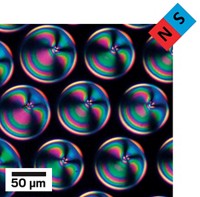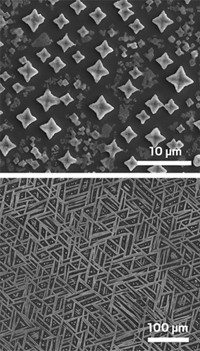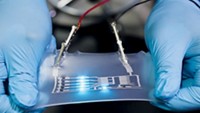Advertisement
Grab your lab coat. Let's get started
Welcome!
Welcome!
Create an account below to get 6 C&EN articles per month, receive newsletters and more - all free.
It seems this is your first time logging in online. Please enter the following information to continue.
As an ACS member you automatically get access to this site. All we need is few more details to create your reading experience.
Not you? Sign in with a different account.
Not you? Sign in with a different account.
ERROR 1
ERROR 1
ERROR 2
ERROR 2
ERROR 2
ERROR 2
ERROR 2
Password and Confirm password must match.
If you have an ACS member number, please enter it here so we can link this account to your membership. (optional)
ERROR 2
ACS values your privacy. By submitting your information, you are gaining access to C&EN and subscribing to our weekly newsletter. We use the information you provide to make your reading experience better, and we will never sell your data to third party members.
Materials
Seeing static with zinc oxide nanowires
Low-cost suspensions containing the wires could be money savers for the electronics industry
by Matt Davenport
November 14, 2016
| A version of this story appeared in
Volume 94, Issue 45


Some industry insiders estimate that electronics makers lose billions of dollars each year to the menace of static electricity. When static accumulates unchecked, it can discharge its energy through electronic components and destroy devices. Researchers led by Andris Šutka of the University of Tartu and Riga Technical University have now shown that zinc oxide nanowires could offer an easy way to spot static before it becomes a problem. The team uses a viscous fluid of amino-terminated poly(dimethylsiloxane) to disperse and suspend ZnO nanowires doped with transition metals. When placed near static electric charge, the wires align with one another and darken the suspension, allowing the researchers to see areas of static buildup with their naked eyes (Adv. Mater. Technol. 2016, DOI: 10.1002/admt.201600154). When the static charge dissipates, the wires return to a disoriented state within the fluid and the suspension regains its brightness. Šutka says the suspensions rely on low-cost materials and scalable fabrication methods that could also make them useful in displays, solar cells, and optoelectronic devices.





Join the conversation
Contact the reporter
Submit a Letter to the Editor for publication
Engage with us on Twitter